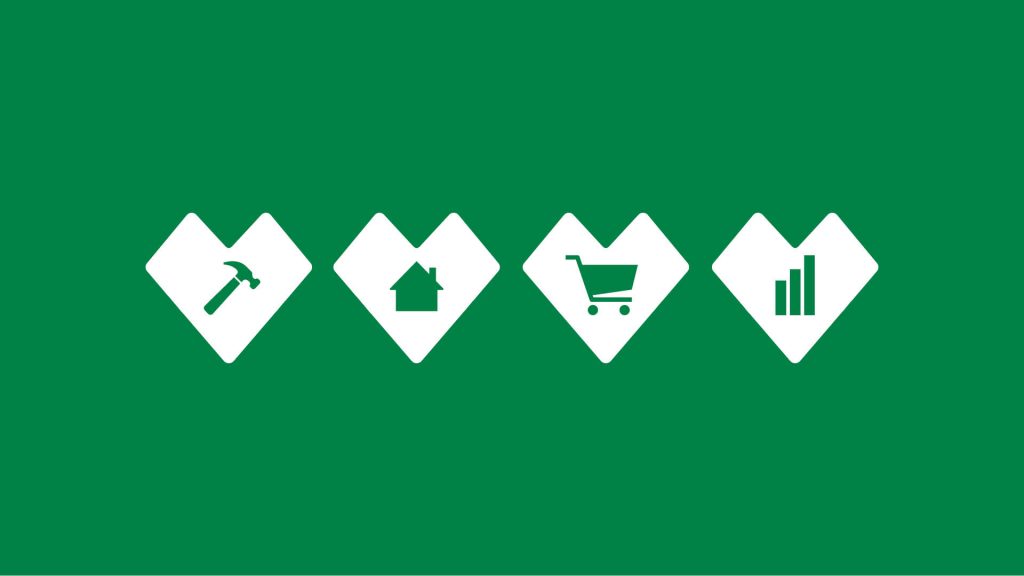Getting to the root of one of the biggest challenges in urban design
When Geelong was first designed there was a huge push to include big beautiful leafy trees. Those urban planners were focused on creating a legacy and knew the benefits trees provide. But as time has gone on trees have become much less of a priority. Utility, maintenance, and penny pinching have led to what many consider soulless urban sprawl. But Lovely Banks has something very different in mind.
Struggling to achieve growth
The City of Greater Geelong has dedicated itself to creating a 25% canopy cover for urban Geelong within 30 years. But this has proved difficult in the new residential subdivisions. There simply is not enough soil or water for trees to grow healthily.
This is down to how streets are currently engineered. Often urban planners focus on everything but the health of the tree. They use cookie cutter solutions that ignore local conditions and include trees as an afterthought. This leads to the small, sad trees that struggle to grow along many of Melbourne’s new suburbs.

Here’s how streets are currently designed. Look at how little soil the trees have to grow in.
Money doesn’t grow on trees…right?
The failure to consider trees when designing streets is a real missed opportunity. This is because large trees provide a myriad of tangible benefits to the community.
For example, streets lined with trees are up to 20 degrees cooler than ones without and one tree cools the same as ten air conditioners. That equates to cooler homes and actual savings in electricity. Plus, trees act as giant living breathing air purifiers. One tree filters 27kgs of pollutants a year while producing 21kg of oxygen.
But it’s more than just fresh air. One study prepared by the City of Melbourne saw that a 10% increase in tree canopy led to an increase in property value of about $50,000. It ends up being about $200 increase in street value per year. And other studies have shown that an abundance of large trees even leads to an improved local economy. Customers have been shown to spend 10% more in local businesses situated in leafy suburbs. Plus it’s simply nice to walk and cycle through shady streets.
Perry Lethlean, Managing Director of the word renowned TCL landscape architecture firm, puts it as follows: “Street trees are the greatest urban design tool to connect communities, green our cities and tackle climate change. Instead of designing streets that effectively bonsai our trees, let us look at alternatives that provide the right conditions for trees to thrive. We are all drawn to beautiful streets lined with big shady trees. This should be our goal for all of our communities.”
So why aren’t all streets packed with majestic oaks or beautiful gumtrees? Simply because streets are not being designed with the trees in mind.
But Lovely Banks’ is different. We’re working on a revolutionary new design, developing draft concepts, and currently undertaking stakeholder discussions so as to finalise our recommendations.
An innovative approach…
We’re giving the trees a voice by treating them like the beautiful living organisms they are – rather than another utility.
Streets are complicated to design and compromise is unavoidable. But too often trees are not even considered. Giving them more importance than other utilities like water or electricity is a small but seismic shift in how we think about street design.
The Lovely Banks team is looking at what large trees need to thrive and then working backward from there. They consider everything from soil depth, soil type and even average wind direction to ensure that every tree planted will have everything it needs to grow.
Things like re-locating services to provide space for tree roots to grow, permeable footpaths, deep embedment zones and non-paved spaces all add up to a street that has the conditions to grow a beautiful healthy canopy cover with all the benefits that that entails.
This radical new way of looking at street design will lead to a 25% canopy cover across Lovely Banks, which is a huge increase versus a normal street. Services will still be easily maintained and homes will stay the same size but trees, pedestrians, cyclists and public transport will be given precedent. It really is quite inspired.
Lovely Banks Project Manager (and Managing Director at Verve Projects), Ray explains: “In thirty years’ time, I want to take my grandkids to Lovely Banks and be proud of the legacy we’ve left. It may cost a little extra now, but the payoff is exponential.”
By re-evaluating how we build streets we can create happier more beautiful communities where families can flourish for generations.



